With Julien Beller, urgency architect for migrants in Paris
Published 27 September 2016 by Ewen Chardronnet
Mid-October, Paris will have its “orientation and shelter place” for refugees. Makery decided to support this construction site entrusted to a specialist of ephemeral and modular architecture, Julien Beller. Encounter.
The “orientation and shelter place” for the refugees and migrants of Paris opens on October 15 boulevard Ney, porte de la Chapelle in the 18th arrondissement. As prime contractor, Paris City Hall and the charity that manages the site, Emmaüs Solidarité, called upon Julien Beller, activist architect who has been working on the issue of informal accommodation for years. Former member of the collective Exyzt, Julien Beller founded and has been heading for several years 6b, a cultural space in the Parisian suburbs.
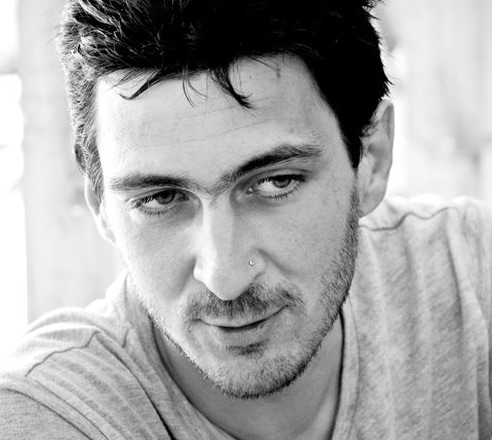
When do you think you will open the site boulevard Ney?
The first objective of this place is welcome and shelter. I was commissioned by the Paris City Hall on July 15 and we will open on October 15. We had to build in less than three months more than 5,000 m2, heatable, with the obligation to design a project that was modular and could be dismantled 18 months after its opening, on a temporary site that still belongs to the railway company SNCF and will become a site of the university campus Condorcet.

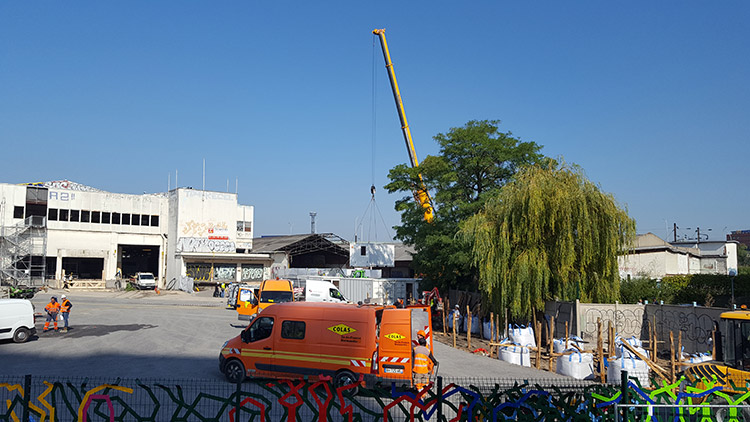
How is the welcome site organized?
The project is being developed into three buildings intended to welcome the public. The first one is the welcome center, an inflatable structure that will have counters where people can go and introduce themselves to understand their rights and be orientated. A hundred or so Emmaüs Solidarité employees will take care of them and the charity will work hand in hand with the different support structures for the homeless and state refugees. The second building is a health center for emergency care and the follow-up of residents. It will be under the responsibility of humanitarian associations, le Samu social and Médecins du Monde.
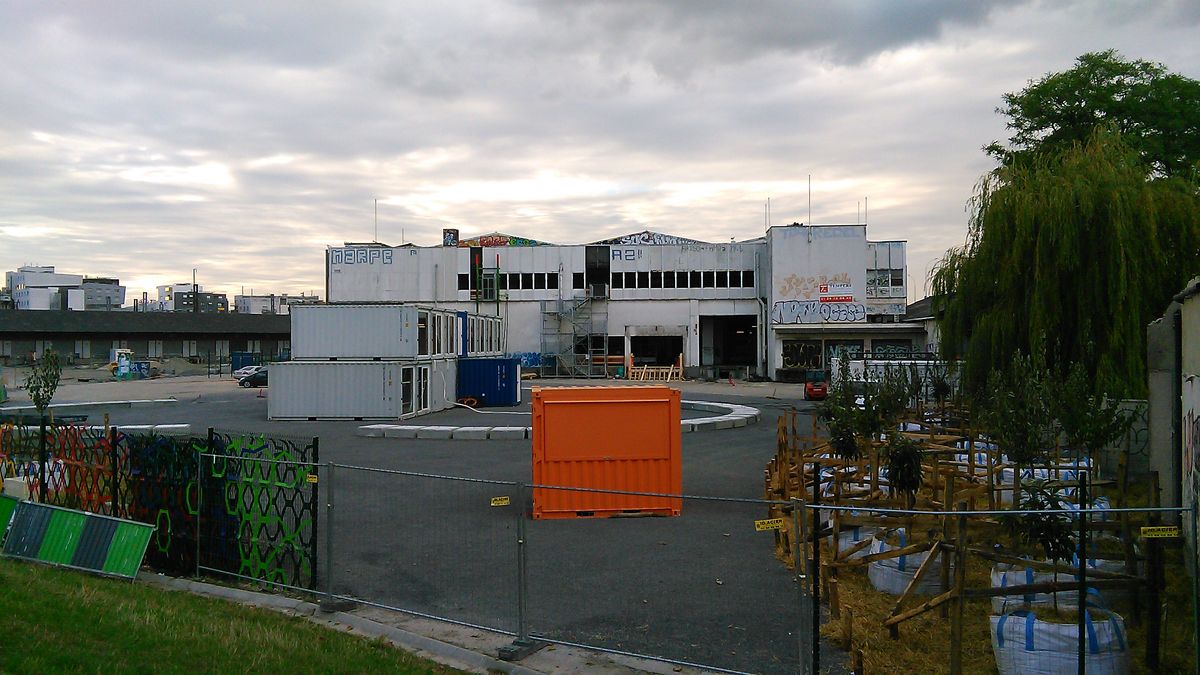
The third building, called “temporary shelter center” – I don’t use the term refugee camp – will welcome 400 single men to begin with, maybe 600 at the end of the year, who will be able to sleep there every night, for stays from 5 to 10 days, allowing for time to find a place in an accommodation center.
We really wanted people to be able to rest, find their bearings, talk with people who speak the same language as them, to find direction in everyday life, etc. Emmaüs Solidarité had the intelligence to say that one shouldn’t have unique accommodation for 400 people, but 8 areas for 50 people. Firstly, to be able to support people with more proximity. Then for people to feel better, not in a block with no soul, so they can rebuild a community, spend time together.
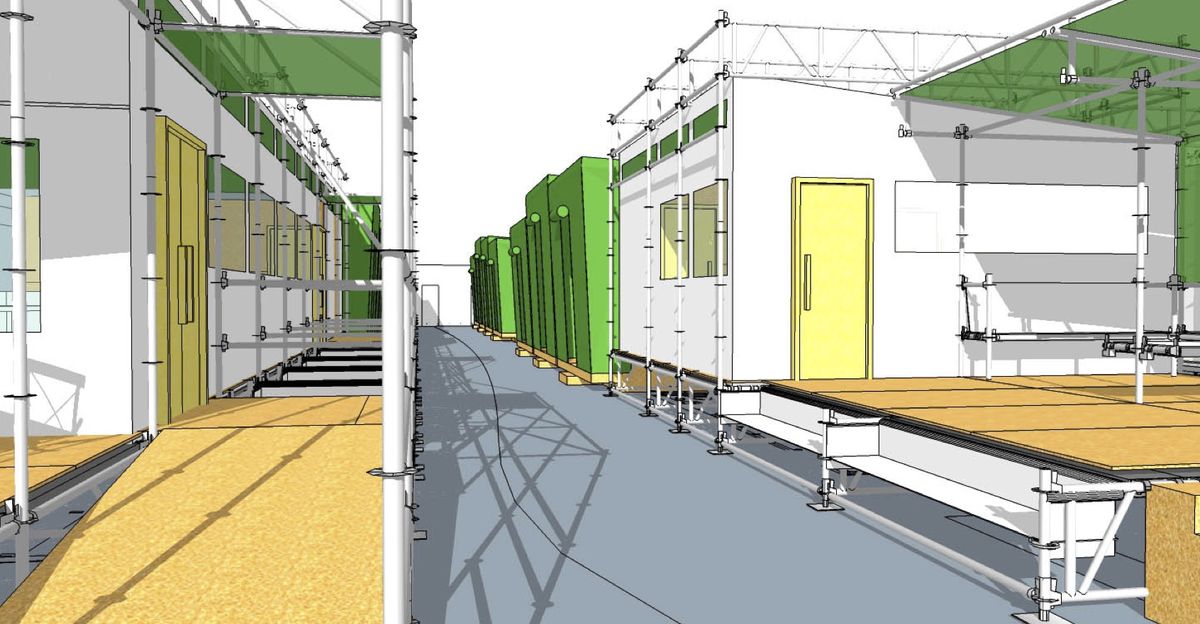
Concretely, how did you want to occupy the covered site?
The first move was to secure the market building and its entrances. Then we launched the production of accommodation modules. Each street will open with a welcome point for newcomers and a canteen with a scaffolding and stretched canvas, electrically heated, with a kitchen and tables to eat.
Then follow a dozen bedrooms for four people, wooden frame constructions, for them to be properly insulated, comfortable and sound-proof. Each room will have front steps, with a glass door and a plastic awning to store one’s shoes, dry towels, etc. Each bed will have a power socket. Wi-Fi will be available on the whole site. Each street ends with a sanitary block in shipping containers. There will also be a shop made with containers with volunteers who will organize the distribution of clothing, laundromats, as well as common areas with benches for orientation. We will also set up a football pitch and areas where associations will be able to dispense activities.
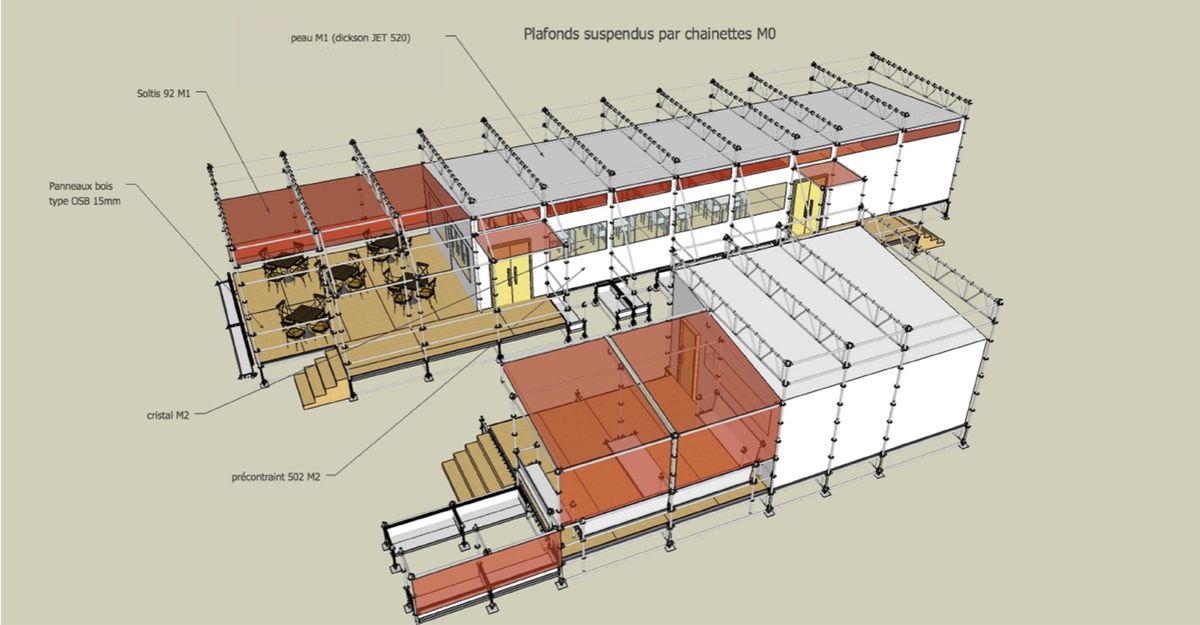
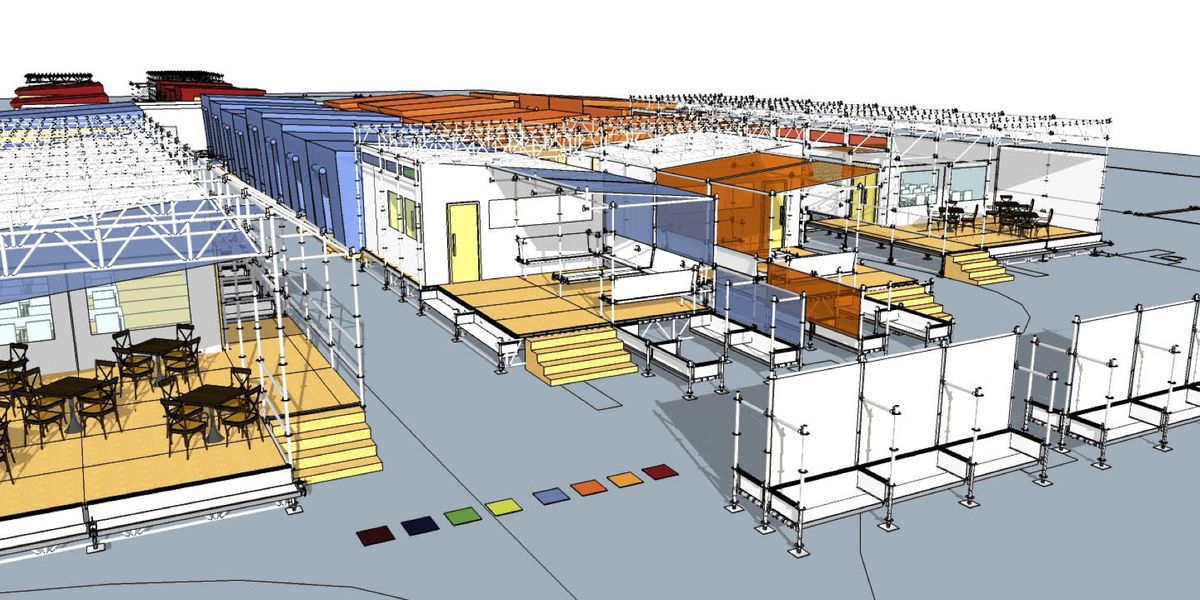
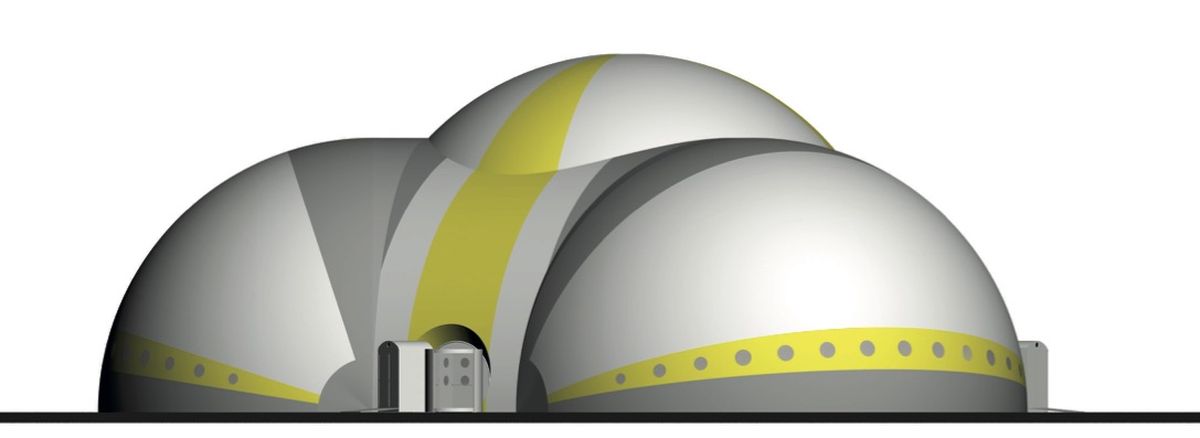
Why an inflatable structure at reception?
I wanted a strong gesture for the welcome center and I thought of an inflatable architecture. I went to see the pioneer Hans-Walter Müller who took an immediate interest. And at 84, he is very motivated and comes regularly to the construction site. The bubble will shelter a series of containers on two floors to organize offices and welcome areas.
Hans-Walter Müller’s inflatable structure, “Rendez-vous avec la Vi(ll)e aux Batignolles”, 2014:
In what way did your past experiences inspire you?
I first worked within the collective Exyzt that made ephemeral architectures to occupy interstices in the city. Exyzt was interested in the living together and collaborated with artists to think out the activation of abandoned sites. We also wanted artists to step in boulevard Ney.
In my career, I also worked a lot with Travelers, Romani in slums, to support people and think out “common” areas, common rooms, sanitary facilities, etc. With “Perou” (exploration center for urban resources) for which I realized the embassy in Ris-Orangis and that also works in Calais, or still with associations like AoA that I co-founded with the architects Fiona Meadows and Patrick Bouchain, and with which we carried out actions in Africa, including Cameroun, Mali, Morocco, with students motivated by the idea of finding solutions to “do on site”.
Then, with the creation of le 6b in Saint-Denis, I learned to manage the regulatory, administrative and economic levels of a sort of informal city that is built by its inhabitants. How you orchestrate them, organize them, while managing to remain within the norms.
“In the end, there are three sources of inspiration: the construction site that can be assembled and dismantled, the informal village so people can live there, have common areas, and camping sites with their large and small alleys that lead to privacy.”
With which budget do you need to build all this?
We have a budget of 5 million euros, i.e. a little less than €1,000 per square meter. We had to design the project in response to pressing needs, in a week, think out a decent welcome place for refugees, of which we can be proud. I need to be reactive and I didn’t have the time to visit other experiences. I therefore called upon my previous experiences. Fifteen years ago, I had for example carried out a project in Soweto (South Africa). I also took part this spring in the exhibition Habiter le campement (live in the camp) at the City of architecture in Paris.
Enregistrer
